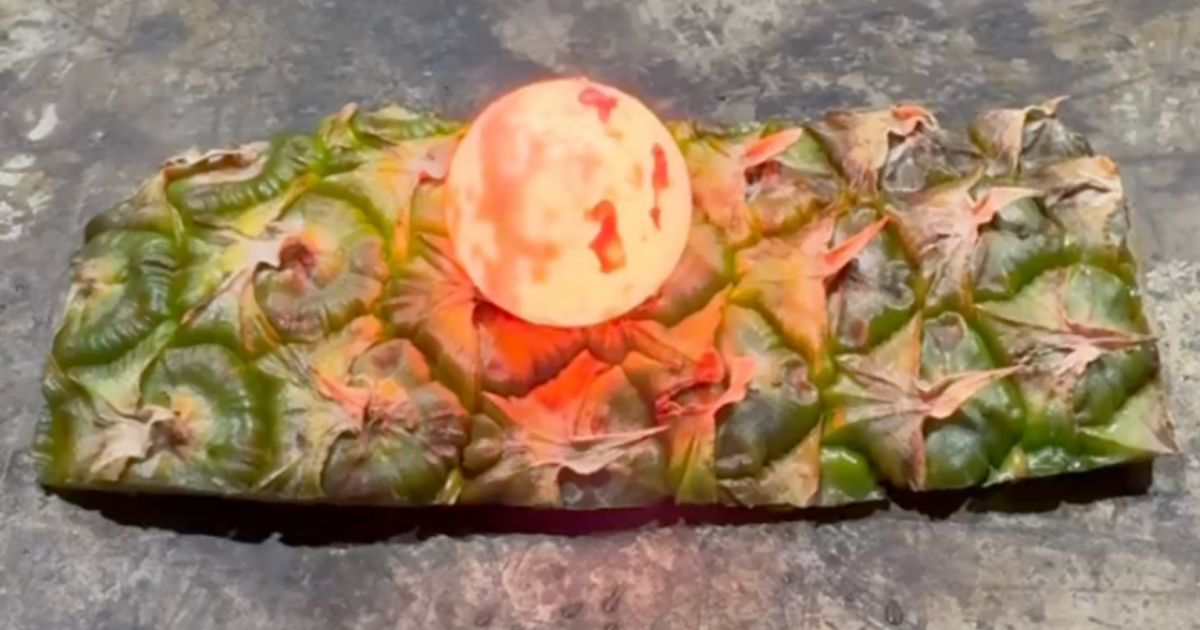
There are things in this world you never thought about, and that’s okay.
Then there are things you learn and you think…I definitely needed to know that, and I’ll never forget it.
Whether or not the toughness of a pineapple’s skin falls in the first or the second category is up to you, but in a minute, you’re going to have that information in your brain.
When a metal ball heated to 1,000 degrees Celsius (1,832 degrees Fahrenheit) is dropped onto a piece of pineapple skin, absolutely nothing happens.
An experiment in which a 1000℃ iron ball was placed on the skin of a discarded pineapple.
pic.twitter.com/TjLNkX8Eh4
— The Best (@ThebestFigen) May 16, 2024
No burning, erupting into flames, or melting down into goo at all.
That’s because of a little thing called the Leidenfrost effect.
The Leidenfrost effect is not unique to pineapples, but applies to things like watermelons as well.
Seppo Loukhenkilpi of Aalto University School of Chemical Technology explains.
“Heat transfer is influenced by something known as Leidenfrost temperature. Above this temperature, a surface is so hot that when it comes into contact with a liquid it forms a layer of steam so the surface and the liquid aren’t in direct contact.”
You’ve probably seen this in action when hot liquid that is dropped on a surface appears to form little balls that can sort of roll around.
Or, if you put a really hot ball into water, a little steam bubble surrounds it that keeps it from actually touching the water.
On surfaces above the Leidenfrost temperature, the heat transfer rate doesn’t change much, but for surfaces below, the cooler hot surface can come into direct contact with the liquid, which increases the rate of transfer.
So, there’s nothing really special about the pineapple skin – you could damage it with a less-hot meal ball.
So I guess Bowser must not be wearing a pineapple on his back after all.
If you think that’s impressive, check out this story about a “goldmine” of lithium that was found in the U.S. that could completely change the EV battery game.